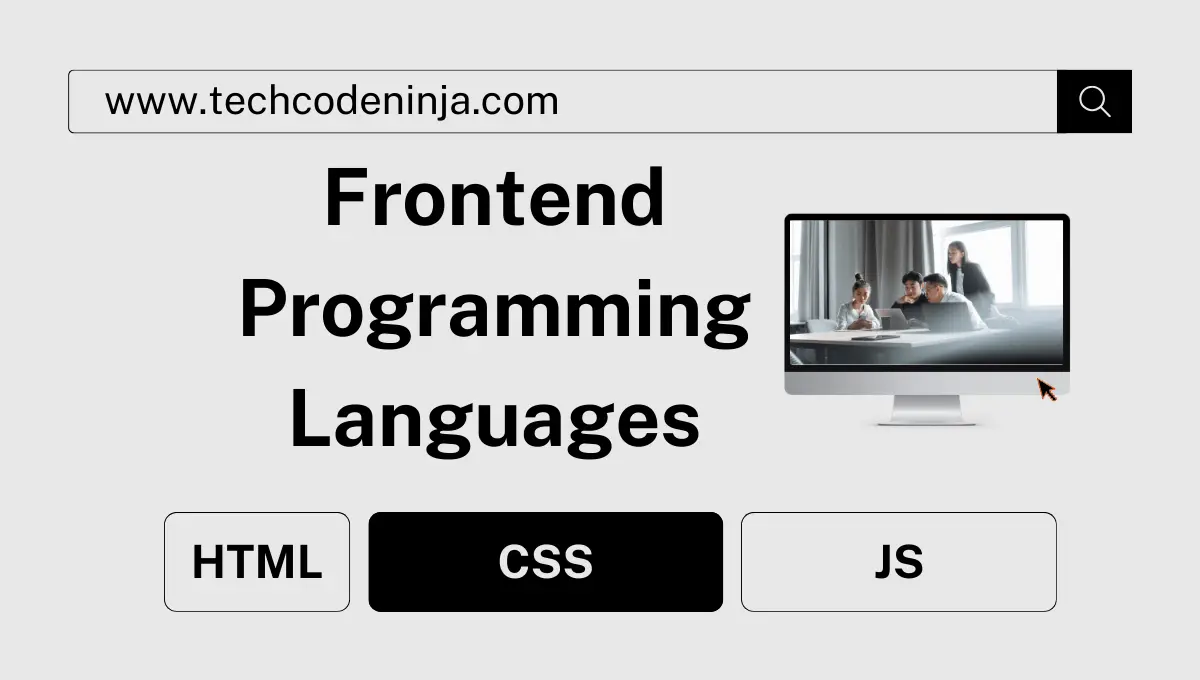Search engines. Online applications. Social media platforms. What do they have in common? They rely on Frontend Programming Language to create the stunning interfaces we interact with daily.
Understanding Backbone of Frontend Programming Language is crucial in the digital realm. It defines the code that powers the visual elements users see and engage with on websites and applications. The code encompasses HTML, CSS, and JavaScript.
Table of Contents
Importance of Frontend Programming Language
User Interface Development: Frontend Programming Language is vital for creating user-friendly interfaces. It dictates the layout, design, and interaction points, ensuring a seamless user experience.
Role in Web Development: It plays a pivotal role in web development, allowing developers to craft visually appealing and responsive websites. The blend of HTML, CSS, and JavaScript enables dynamic content presentation.
Frontend Programming Language Backbone
HTML
Hypertext Markup Language (HTML) forms the backbone of any web page. It structures content, incorporating text, images, and links, allowing browsers to render web pages correctly.
CSS
Cascading Style Sheets (CSS) beautify web pages. It styles HTML elements, providing visual enhancements, defining layout, colors, and typography, thus enhancing the overall look and feel.
JavaScript
JavaScript (JS) is the dynamic element in the trio. It facilitates interactivity on websites, enabling dynamic updates, animations, and user-initiated actions.
Comparison between Frontend Programming Languages
Features and Capabilities
Each language has its unique features. While HTML is for content structure, CSS focuses on styling, and JavaScript adds functionality, making them complementary.
Popularity
Among these, JavaScript leads the race due to its versatility and use in both front and back end development. CSS follows suit for its crucial role in design.
Learning Front End Programming
Online Resources
Numerous online platforms offer tutorials, courses, and documentation, such as Codecademy, W3Schools, Coursera , Tutorial Point and Udemy, aiding beginners in learning these languages.
Books
Books like “Eloquent JavaScript” and “HTML and CSS: Design and Build Websites” serve as comprehensive guides for enthusiasts seeking in-depth knowledge.
Tutorials
YouTube tutorials and interactive websites provide hands-on experiences, making learning Front End Programming Language engaging and practical.
Career Opportunities
Job Roles
Proficiency in Front End Programming Language opens doors to roles like Front End Developer, UI/UX Designer, and Web Developer in various industries.
Salary Prospects
Skilled professionals in these languages often command competitive salaries due to the increasing demand for top-notch user experiences.
Future of Front End Programming
Technological Advancements
The landscape is evolving with the rise of frameworks like React, Angular, and Vue.js, promising more efficient development and enhanced user experiences.
Emerging Trends
Trends like Progressive Web Apps (PWAs) and Single Page Applications (SPAs) are reshaping how users interact with web content, emphasizing speed and responsiveness.
Challenges in Front End Development
Browser Compatibility
Ensuring websites function uniformly across different browsers remains a challenge due to varying interpretations of code.
Responsive Design
With the surge in mobile usage, creating responsive designs compatible with different devices requires meticulous planning and execution.
Tips for Mastering Front End
Continuous Learning
Given the rapid evolution, staying updated with new trends, languages, and frameworks is crucial for staying relevant.
Practice and Projects
Engaging in real-world projects helps reinforce theoretical knowledge, honing skills and building a robust portfolio.
FAQs
What is the significance of Front End Programming Languages?
Front End languages dictate the look, feel, and interactivity of websites and applications, crucial for user engagement.
Which are the top Front End Programming Languages?
HTML, CSS, and JavaScript are the foundational languages dominating Front End development.
Where can one learn Front End Programming Languages?
Online platforms like Codecademy, YouTube tutorials, and books like “Eloquent JavaScript” serve as excellent resources.
What career opportunities exist for Front End developers?
Professionals proficient in Front End languages can explore roles like UI/UX Designer, Front End Developer, and Web Developer.
What are the future trends in Front End Development?
Technological advancements such as React, Angular, and emerging concepts like PWAs and SPAs are shaping the future of Front End development.
How can one tackle challenges in Front End Development?
By focusing on continuous learning, staying updated, and practicing through real-world projects, individuals can overcome Front End challenges.
Is there any prerequisite programming language?
No but if you want to learn frontend language then first you have to learn Back End Programming Language.
Conclusion
Mastering Front End Programming Language is indispensable in today’s digital landscape. Its impact on user experiences, career opportunities, and technological advancements underscores its significance. Embrace the journey of learning these languages, keeping abreast of trends and challenges to thrive in this dynamic field.
